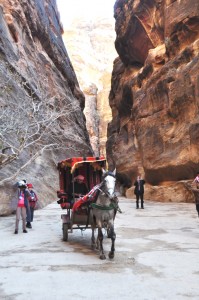
My conversation with Nasser started the way these conversations so often do.
“30 dinar! It’s a good price!”
“No, it’s too much.”
“How much you want to pay?”
“I don’t want to pay, I want to walk.”
“25 dinar, then. I give you good price.”
And so on.
We settled at 20 dinar – which just happens to be the standard fare, as much as anything is standard when haggling with a Bedouin for a ride in a horse-drawn carriage on the sandstone streets of an ancient city made of rock. A lost city, in the words of poet John William Burgon, “rose-red and half as old as time.”
In Your Bucket Because…
- It’s one of the world’s great archaeological sites.
- The sheer rock walls carved into facades of buildings are unique. There isn’t another site like this, anywhere.
- Good for history buffs, photographers, cruise ship passengers on shore excurions from Aqaba, visitors to Eilat.
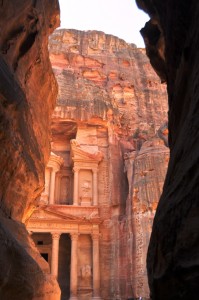
I hopped into my chariot in front of a building that looked like an American town hall or an enormous bank. Except for the fact that we weren’t in America and it was not a building at all: It was carved out of a wall of rock, and we approached it from a slot canyon that dwarfed us like a Manhattan skyscraper.
The building is called the Treasury. It is perhaps the most famous image of this unique and mysterious rock city, a towering, Greek-styled building that is itself a tomb. You see it for the first time from the narrow red-rock slot canyon known as the Siq. You know what it looks like if you’ve seen Indiana Jones and the Last Crusade.
Petra: Timeless Mystery in a Timeless Desert
Petra: the word means rock: unmovable, unbreakable rock (as opposed to petros, which merely means moveable, unstable stone). This is inarguably petra, not petros, and these cliffs are the heart of a necroplis that includes, in addition, to the Treasury, rows upon rows of tombs, other building-shaped architectural carvings hiding yet more tombs, and an entire Roman-style amphitheater from which to sit and observe it all.
The open square in front of the Treasury is filled with people milling about. Camels spit and drool, wearing their multi-colored tack and looking generally disdainful and out-of-sorts. People argue over prices of trinkets and transport. In a city founded on the wealth of trading and camel caravans, it all seems timeless.
And really, imagine a little. Clear your mind of the digital cameras, of your fellow fair-skinned (and soon to be sun-burnt) visitors, of the patter of tour guides, and it could be 2000 years ago: Red rock, blue sky, the winter-weak sun fierce and glaring, even in January. A few thousand feet higher in the mountains, snow has fallen and stuck to the ground; last week, an army truck had to rescue a bus load of tourists from impassable roads. But here in the valley, I am hot and thirsty, something that doesn’t change with technology. The desert is timeless that way.
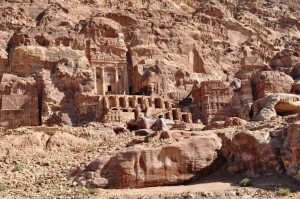
A World Heritage Site and More
Petra is one of those places that shows up on global “best of” lists. The BBC has called it one of 40 must-see destinations. Millions of Internet users voted it to the much bally-hooed list of “New7Wonders of the World.” And it is included in UNESCO’s inventory of World Heritage sites, so designated because of its unusual architectural carvings and its innovative dams, cisterns, and conduits.
Established by the Nabataeans in perhaps the sixth century BC, Petra came to its height of power sometime in the second century BC. Its location at the junction of Middle Eastern trade routes gave it a reason to prosper. Dominating the water supply in a stingy, sere environment gave it the means: With water, Petra could control not only its own destiny, but the spice caravans traveling from southern Arabia to and Jaffa and the Mediterranean.
Petra Today
The Bedouins who now inhabit the region are thought to possibly be the descendants of the originally nomadic Nabataeans who built Petra. Nasser is one of them. He flicks the reins and the horse springs into action, the people in our path scatter aside. Hoof beats echo against the slot canyon walls, and we careen up the hill, passing other horse-and-carriages and the occasional donkey or camel.
Nasser explains that the canyon is divided into zones. “Horse riding from the ticket booths to the entrance,” he tells me. “Then the carriages from the entrance to the Treasury. Then camels past the Roman theater and around the corner. Then donkeys.” Prices for horses, carriages, and camels are somewhat regulated by park policy; with the donkeys, you’re on your own.

Or you can walk. The vast majority of tourists arrive at the eastern side of Petra, and descend to the Treasury via the Siq. As you descend, the rock walls grow taller and narrower until you are in deep shade, and the sun peeks through only the occasional slot.
Until the mid 1980s, whole communities inhabited the caves beyond the main tourist area, Nasser’s family among them. He was born in the caves, he tells me, then moved into town as a young child. Now, he was about to become a father, but his wife would have her baby in the local hospital. Still, some people continue to live in the caves beyond the main tourist areas, including one of Nasser’s sisters. “She has electricity from a generator,” he says. “She can watch television from a satellite.”
What these walls have seen, I ponder: Camel caravans bearing scents and spices; pick-up trucks hauling generators and satellite dishes. The footsteps of Nabataeans and Romans and Arabs and contemporary Jordanians and of course, us tourists have all echoed here. We have all marveled over the mysteries, the colossal architectural sculptures, the lingering questions: Why build a tomb in the shape of a bank? What treasures might lie beneath these rocks?
And of course, we have all bargained. I leave the carriage at the entrance, and hear Nasser making his offer to his next customer. “I give you good price,” he says, a phrase that has surely echoed against these canyon walls in a score of languages through two millennia of years.
Practicalities
- Many tour companies offer Petra as a one-day trip. Day-trips can also be arranged from Eilat, Israel. It’s also a convenient shore excursion from Aqaba, Jordan’s Red Sea port, where cruise ships dock. However, if possible, arrange to stay in the town and take at least three days to explore: There’s a lot to see beyond the main Treasury and Amphitheater areas, although you may want to hire a donkey or a camel to get farther in.
- Horseback rides are available for the half mile between the ticket booth and the entrance to the Siq as part of the cost of admission; you’ll just pay a tip of about $5.00. One-way carriage rides cost about $30 US (20 dinar) and can be shared between two people.
- Wear good walking shoes and bring a sun hat, sunscreen, and plenty of water. You can buy water in the Amphitheater and Treasury areas; there is also food for sale. Dollars and dinar are both accepted.
- The walk (slightly uphill) from the Treasury to the entrance takes 40 minutes to an hour; if you don’t want to walk (and in summer, it can be oppressively hot) you can always catch a chariot back.
Updated 2016
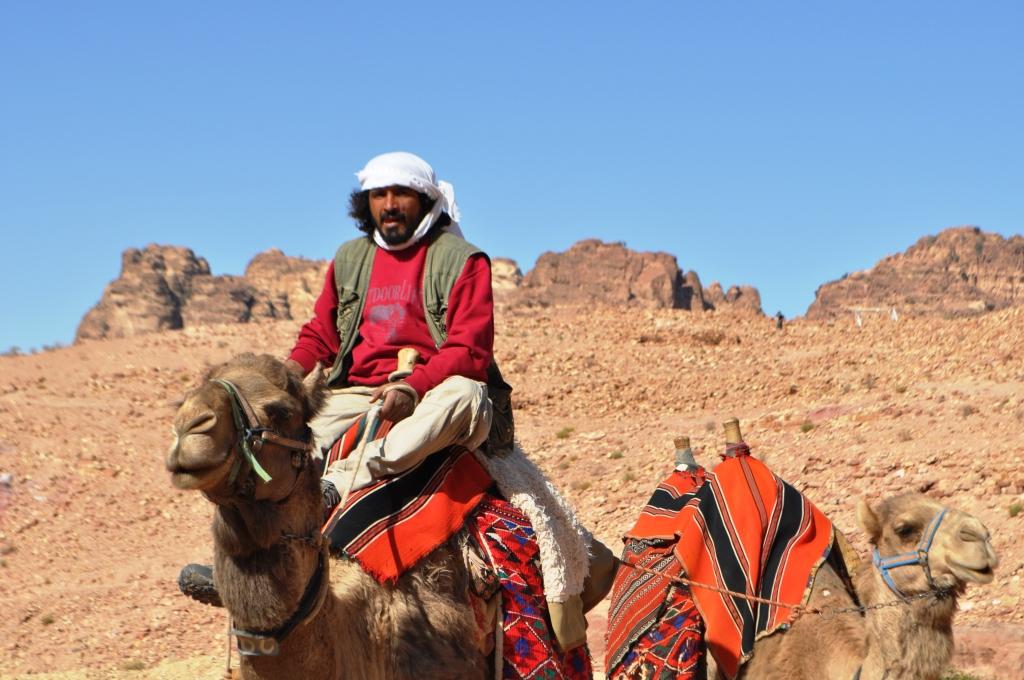
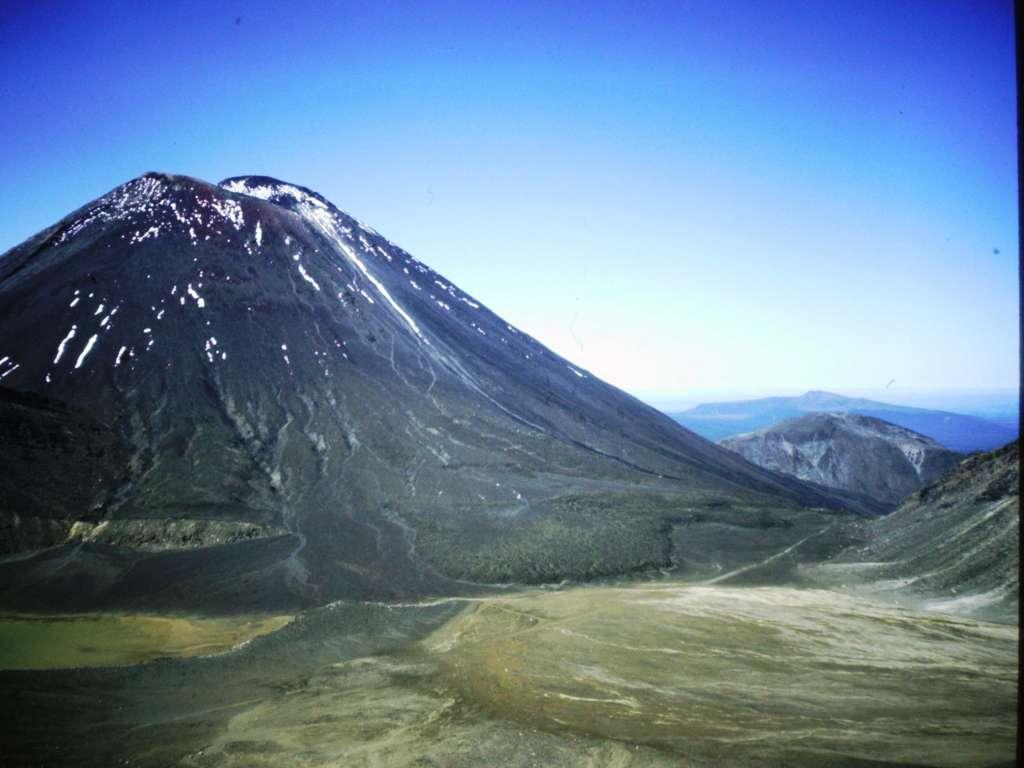
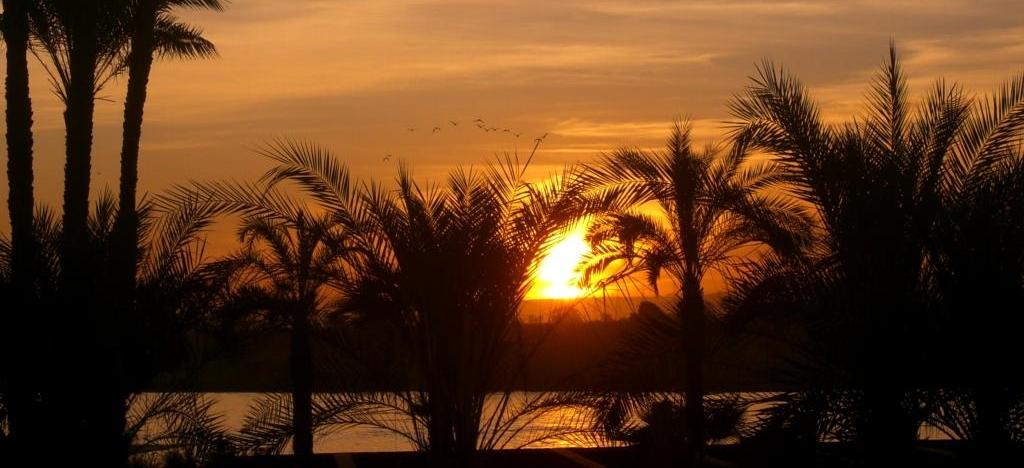
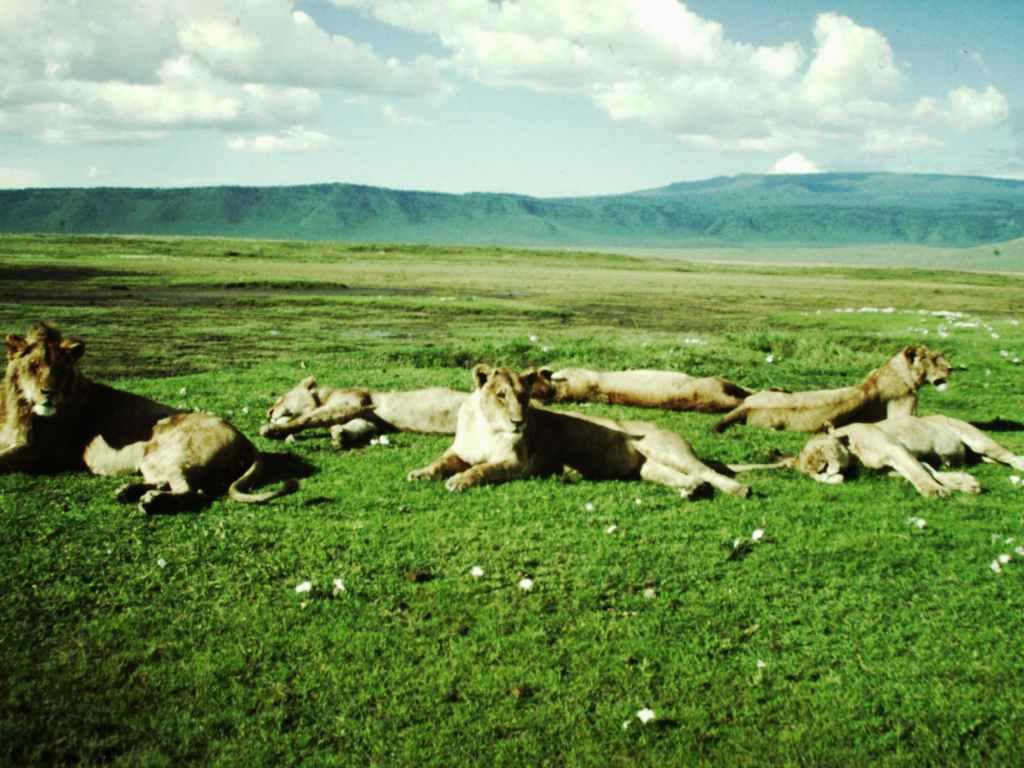
Someday, I will see Petra. It’s definitely on my list. And, a horse-drawn carriage sounds wonderful.
Karen, you’re quite right Petra is a very special place but I feel strongly that the Jordanian government needs to be very careful about how they market the site. I have visited a number of times over the years, the latest in September 2012.
The number of local people involved in pushing camel rides, horse rides, donkey rides and carriage rides has substantially increased. Add to the mix, the numbers selling postcards, pottery, ‘genuine’ Roman coins and more and you are getting to the point of really annoying the visitors. While I understand people have to make a living there has to be a cut off point.
For those thinking about taking a one day trip from Israel, think again, go and stay in Petra or nearby Wadi Musa, it’s very safe as is the rest of Jordan, The entrance fee is…
Thanks for your comment. You can follow us at @Buckettripper on Twitter, and http://www.facebook.com/buckettripper, or at our e-mail feed at http://feeds.feedburner.com/Buckettripper . I’m glad you enjoy the site!